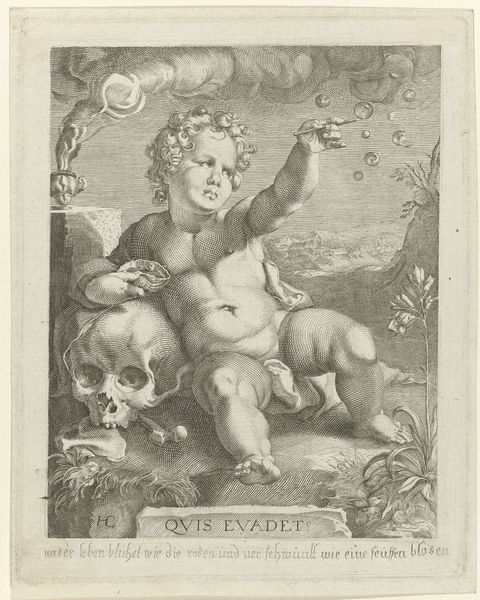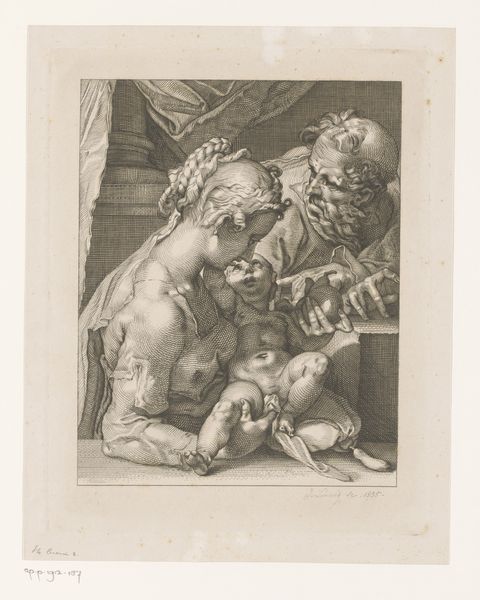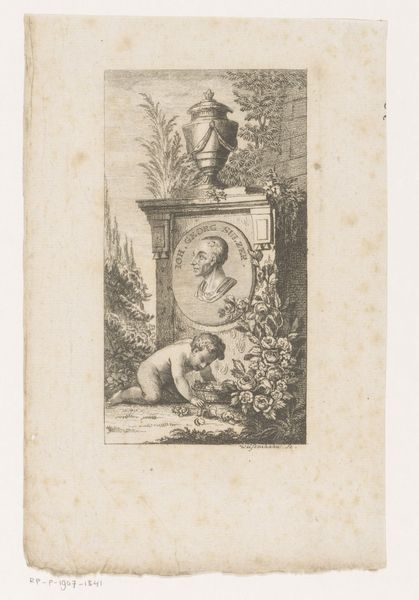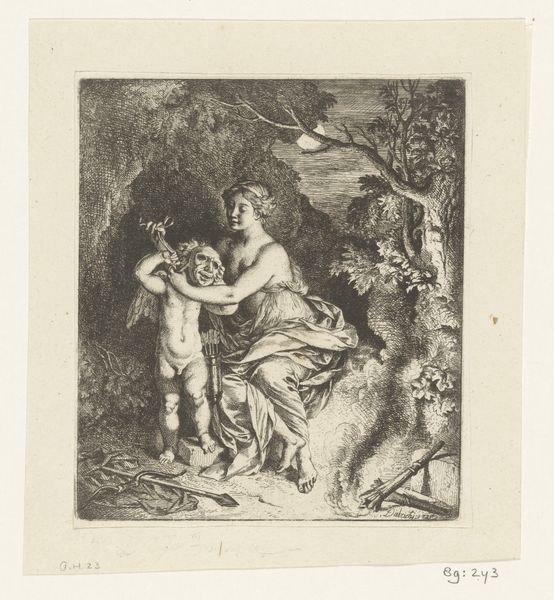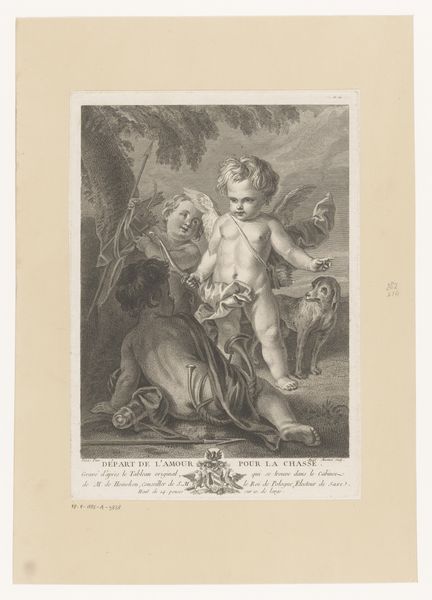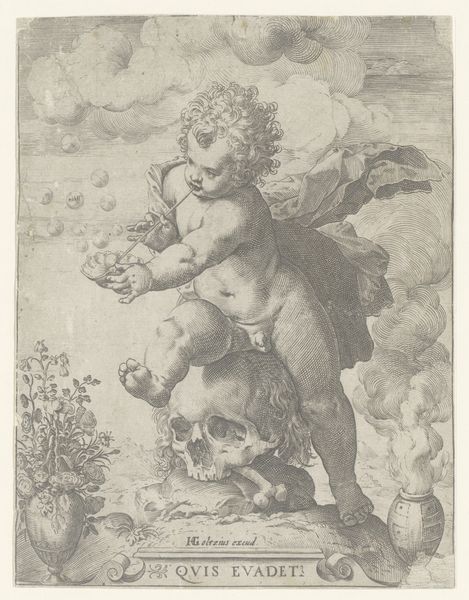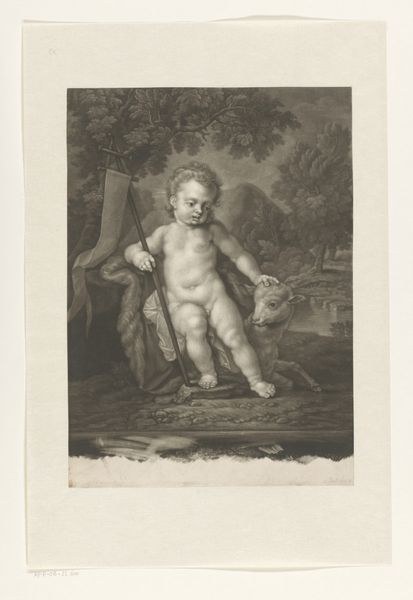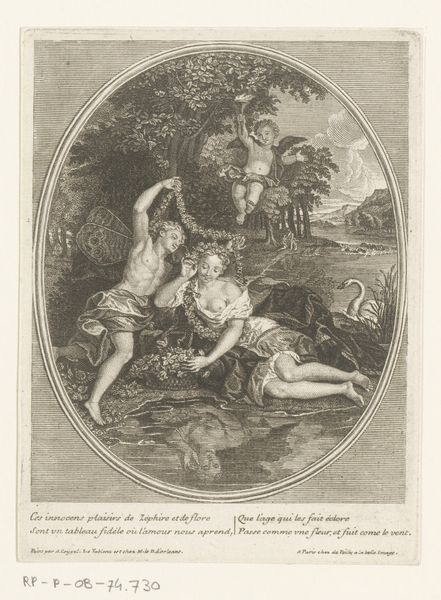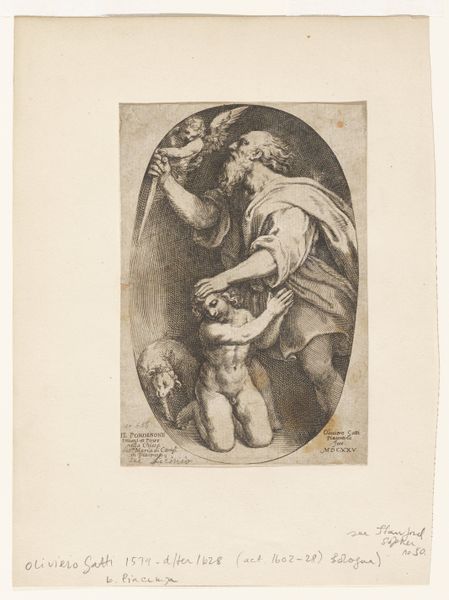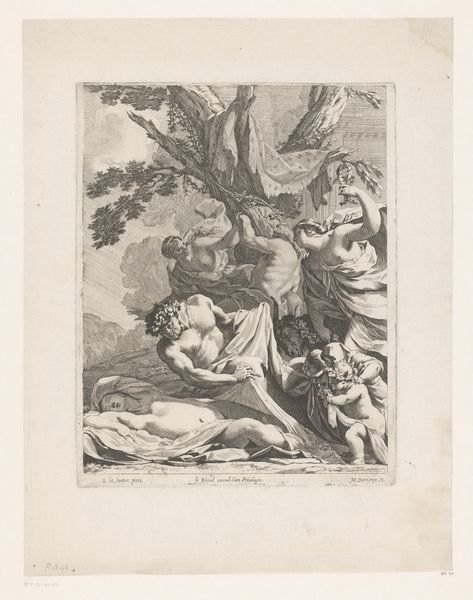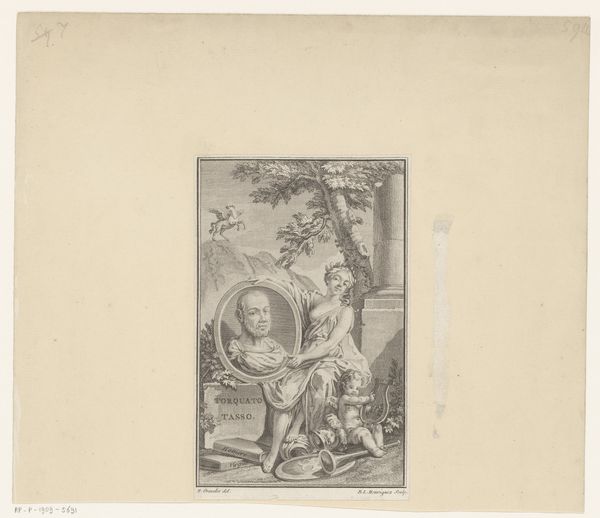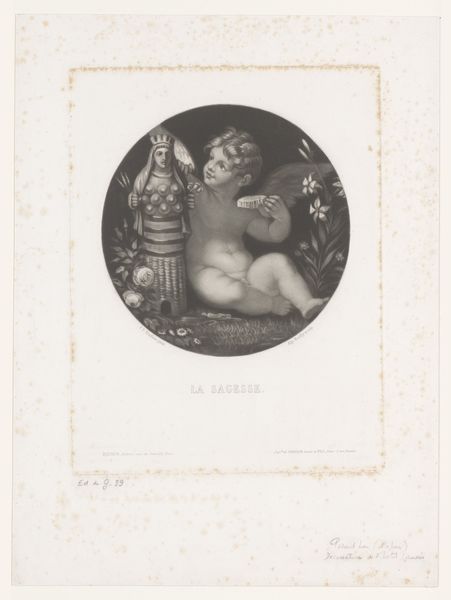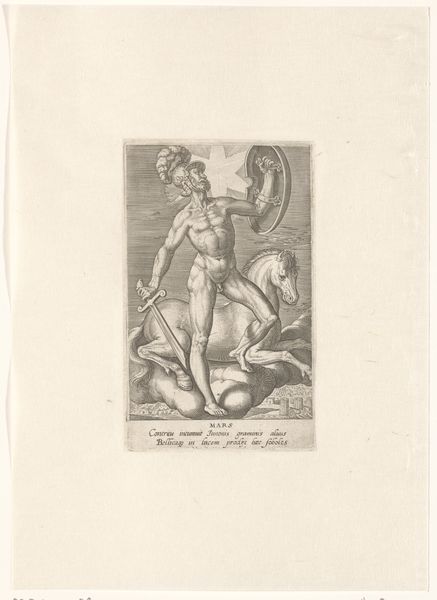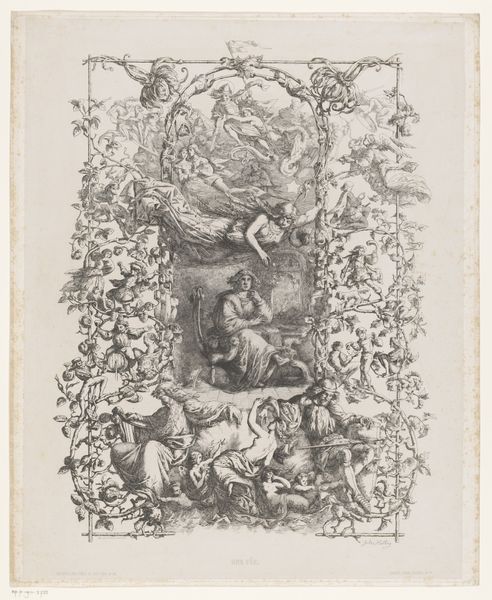
Dimensions: height 265 mm, width 215 mm
Copyright: Rijks Museum: Open Domain
A. Dickhof created this print titled "Allegory of Transience." It can be difficult to interpret art from another time, such as this image. What references would the people of the time understand that we may not? The picture shows a baby blowing bubbles, resting against a skull. Above the image is the phrase "Quis Evadet" - Latin for "Who will escape?" In the 17th century, the time the print was made, the bubbled referred to the brevity of life. The baby appears to be cheerful, perhaps too young to understand that death is inescapable, even for him. The very lack of emotion could be a comment on the inevitability of death. Consider how the social structures of the time influenced this artwork. Was it self-consciously conservative or progressive? Did it critique the institutions of art? These are the kinds of questions a social art historian asks when interpreting art. There are many resources available to researchers to get closer to the answers.
Comments
No comments
Be the first to comment and join the conversation on the ultimate creative platform.
